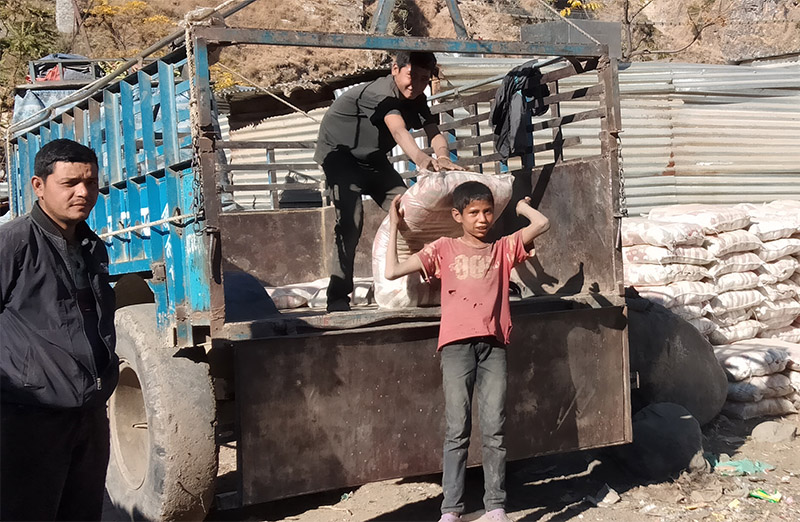Expedite action against child labour: MoFAGA
KATHMANDU, DECEMBER 24
The Ministry of Federal Affairs and General Administration has issued a circular to all the local levels, directing them to duly implement the ‘Procedure for Declaration of Local Level as Child Labour Free Zone-2020’, recently approved by the Government of Nepal.
The federal government had given the draft procedure a final shape on the basis of suggestions and feedbacks received from the local units.
The circular issued by the MoFAGA yesterday said the procedure aimed to free each local level from the worst form of child labour in a sustainable manner, and make Nepal a child labour-free country in the long term as per the constitution, existing Labour Act and commitments made by the government at national and international levels.
This procedure focuses on child labourers being used in private homes, agriculture and animal husbandry, drug smuggling, weaving, brick kilns, mines, entertainment sector, including sexual exploitation, transport, garment, trafficking, street vending, herbs collection, physical infrastructure, hotels, restaurants and other sectors specified by the local levels.
It has stipulated a provision of seven indicators based on which a local level may be declared a child labour-free zone.
The indicators include updated data and documentation, a separate policy related to elimination of child labour, operation of programmes for elimination of child labour, allocation of budget for programmes, institutional arrangements, educational status of children, and provision of cooperation, coordination, and collaboration.
“Enrolment of school-age children should be at least 95 per cent in the concerned local level to be declared a child labour-free zone,” the procedure reads.
The local level is also required to conduct various programmes for the elimination of child labour. Such programmes comprise public awareness raising, psycho-social counselling, arrangement of alternative income source for families of child labourers, skill training for school dropouts of children below 18 years and signing of an agreement with informal sectors for their commitment not to engage any child in labour.
As per the procedure, the concerned local level shall conduct a survey based on the indicators to ascertain if it is eligible to be declared a child labour free zone. “The Ministry of Labour, Employment and Social Security shall evaluate the survey result before allowing the local level to declare itself a child labour free zone,” the procedure says.
The MoLESS has made a provision of providing a grant amount of Rs 300,000 to a local level for the operation of programmes to end child labour each year. After a local level is declared ‘a child labour free zone’, it will be entitled to Rs 200,000. There will be monitoring and evaluation committee at the federal, provincial and local levels to monitor and evaluate programmes related to elimination of child labour.
The federal government has already drafted a bill amending the Child Labour (Prohibition and Regulation) Act-2000 with stringent measures against the worst forms of child labour in the country. In the proposed bill, punitive measure for one employing a person below 18 years of age, includes fine up to Rs 50,000 or imprisonment up to three months, or both.
“If a person employs two or more children, he/she shall be liable to additional punishment of up to two years in jail or a fine up to Rs 200,000 or both,” reads the bill.
Feature Image: File






